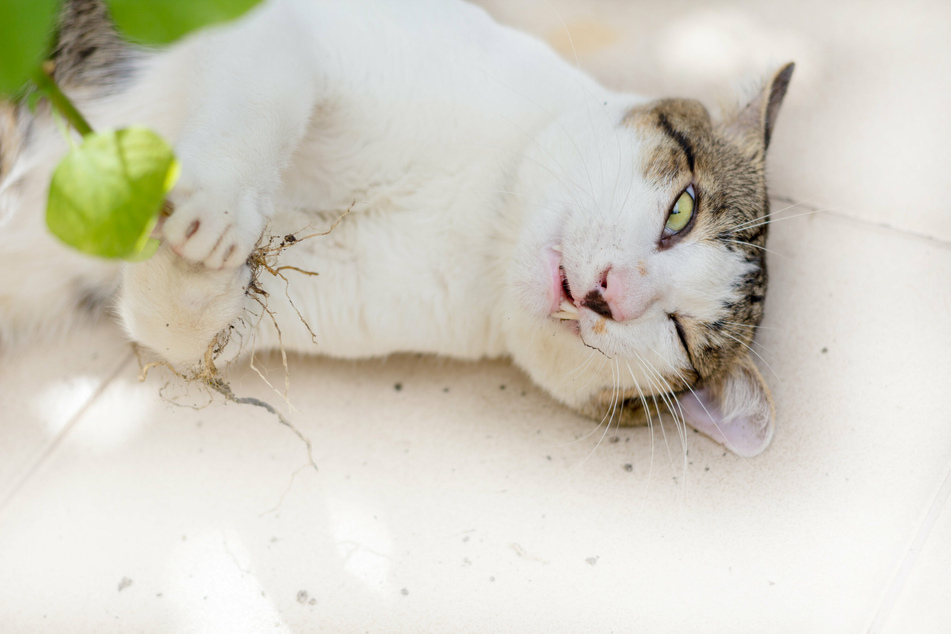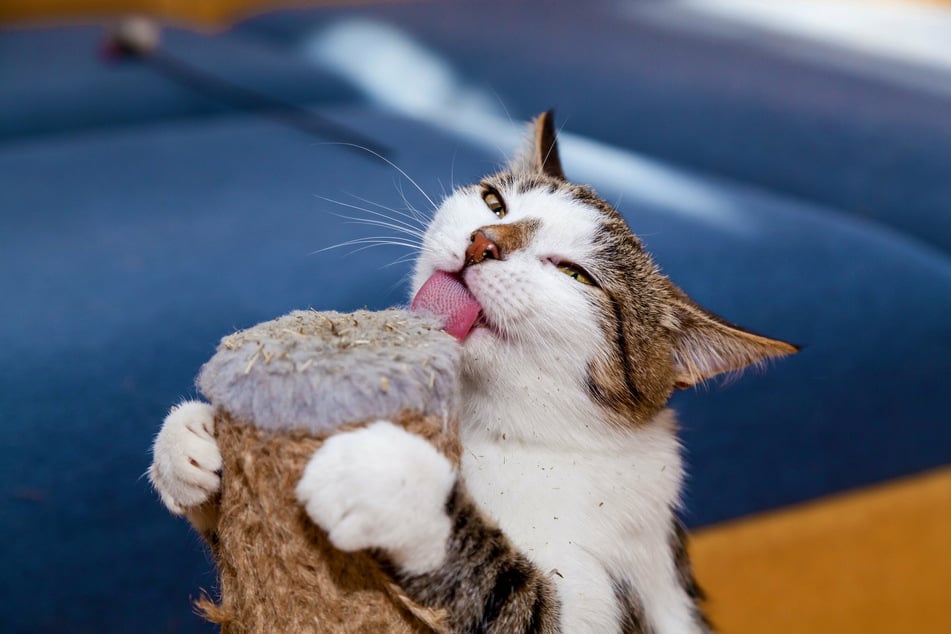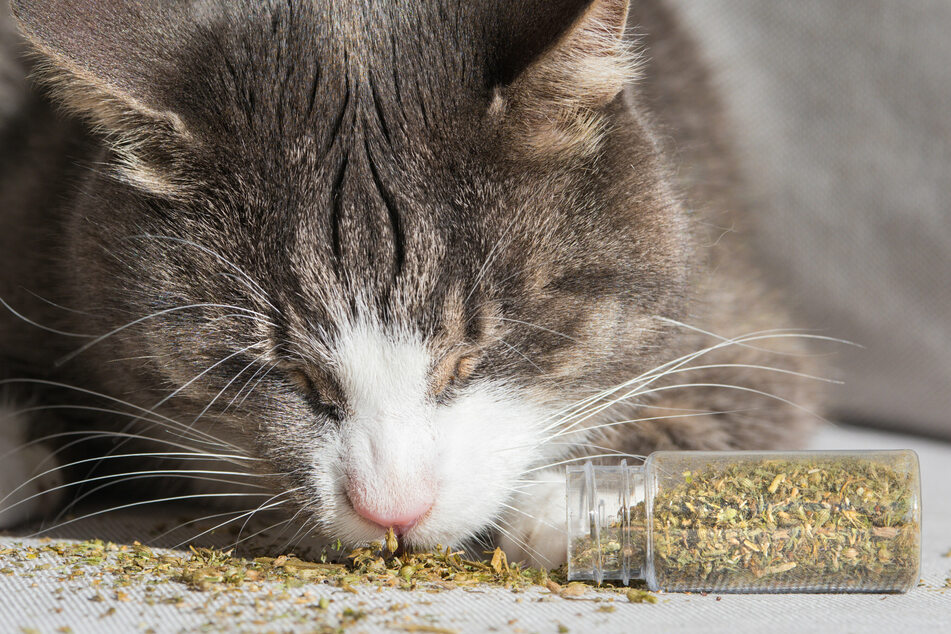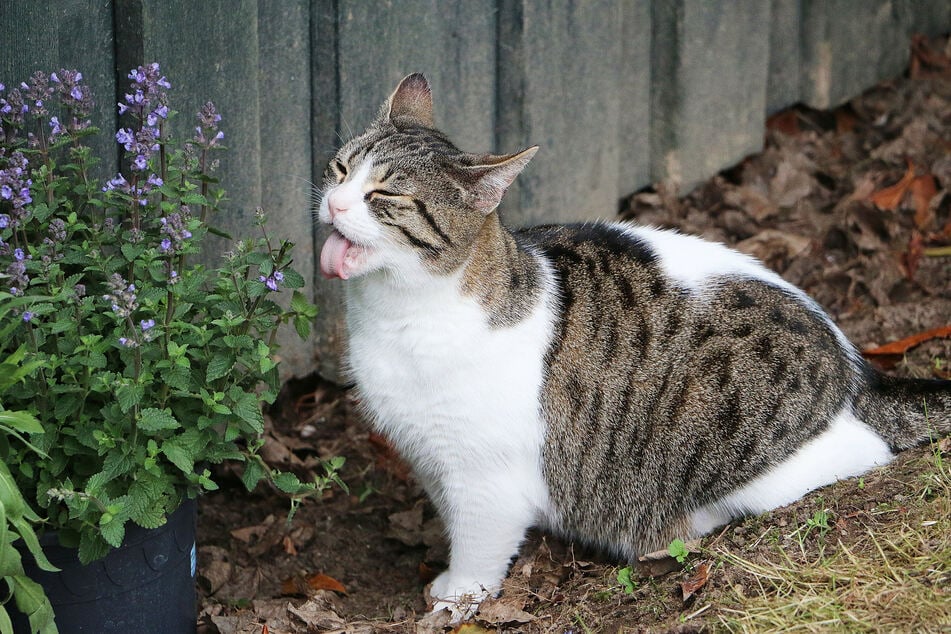Catnip: What effect does catnip have on cats, and how does it work?
The smell of catnip in toys or the plant itself seems to put cats into a drugged state. Should cat owners be concerned about its effects?

Funny videos of cats under the influence of "catnip" (aka catmint) are circulating on the internet, in which they run around wildly, woozily play with toys, or try to catch their hallucinations.
For the trip, it is usually enough for the kitty to smell or lick catnip briefly.
Genuine catnip (Nepeta cataria) belongs to the labiate family and is sometimes referred to as cat balm. Catnip originates from Asia, Africa, and southern Europe.
It can grow up to one meter tall and flowers in blue or white.
For humans, the essential oils of catnip have a pleasantly tart smell of lemon and mint. Cats have a keen sense of smell due to their sensitive nose, which is why they react more strongly to the scent of the plant.
In this cat guide, you can find out whether the effects of catnip are harmless or whether cats should keep their paws off the drugs.
How does catnip work for cats?
The aroma of catnip has a play-stimulating and activating effect on cats and increases their urge to move. Some cats, on the other hand, become very calm and tired from the effect. In rare cases, catnip increases aggression. In most cases, the cat wants to lick the mint, rub against it, or roll around in it.
If you treat unused toys, the scratching post, and other accessories with catnip, they will become interesting for the cat again. Catnip also has a strong attraction effect due to the pheromones it produces, which is why it is well suited to luring cats out of the room or into the transport box, for example. In nature, cats probably use the plant to reproduce, as its claw fruits stick to the cat's fur and are thus spread.
How long the effect lasts in cats varies from animal to animal. The normal state can set in after just five minutes or after more than an hour. The cat should have calmed down again after two hours at the latest.
Cats often need to recover after the ecstatic rush and intense play and sleep for a very long time, after which the cat will only react to the mint again after some time.
Reactions to catnip vary in strength, and it does not work for every cat. It also has an effect on some large cats and wild cats. Catnip is neither effective nor poisonous for dogs.

Can catnip ever be poisonous to cats?
Catnip is not poisonous for healthy cats in good physical condition.
Unlike drugs consumed by humans, the substances do not enter the cat's bloodstream. However, catnip is not suitable for your cat if it suffers from cardiovascular problems.
If your cat licks or eats the mint, this is also harmless. Food containing catnip is now commercially available, which usually has no particular effect on the cat and is merely for taste. Cat owners can try out whether their kitty likes such food, in which case it would be a good idea to mix fresh catmint from your own garden into the food.
Humans can also eat catnip. It is very bitter, which not everyone likes. A healing tea can be prepared from the mint, which is used for complaints such as insomnia and restlessness. You can drink the tea to relax, relieve pain, relieve cramps, aid digestion and reduce fever. The effect of smoking catnip, if it occurs at all, is only very slight.

What do I need to bear in mind when using catnip?
Whether there is a risk of cats becoming addicted to catnip is controversial. In general, cat owners should not give cats excessive amounts of the herb to play with or eat. It could happen that the cat develops digestive pain or that the constant intoxication has a negative effect on its health.
Fresh or dried mint can be bought in shops, but catnip concentrates are also available. These should be used with caution and in small quantities, as most cats are very sensitive to the drug. To avoid stressing the cat, the entire home should not smell of catnip.
Cat owners should also be aware that an increased play and hunting instinct makes the cat even more uncontrollable. Uncoordinated and hasty movements may cause more damage to the home or injury to the cat.
It is advisable to use catnip on cats only once or twice a week, if at all, so as not to endanger their health.
Why doesn't my cat react to catnip?
Some cats are not interested in the catnip or toys filled with the stuff. This is nothing unusual, as not every cat shows a reaction to catnip. It has been shown that younger and older cats react especially little to catnip.
However, catnip has a particularly strong effect on sexually mature male cats because it contains actinidin, a substance that female cats that have not been neutered excrete in their urine.
Planting and caring for catnip

Catnip is not only popular with cats, but it also acts as a natural pest repellent.
The plant's blue and intensely fragrant flowers are a little eye-catcher in a flower pot or a flower bed.
Growing this robust plant is easy, as it grows well in almost any soil. A sunny spot with well-drained, pH-neutral soil is ideal for catnip. Drought is no problem for this labiate plant.
The best time to plant catnip is in spring or autumn. If you want to plant it in summer, you will need to water it more. Catnip flowers from July to September.
After the first flowering, the plant should be pruned close to the ground to give it the strength for a second flowering.
Catnip not only looks beautiful, it also makes the garden cat-friendly and is an asset for all garden and animal lovers.
When used consciously, the natural catnip can make your cat more active and playful, but cat owners should think carefully about whether they can cope with a kitty in a state of intoxication.
Cover photo: 123RF/fukh
